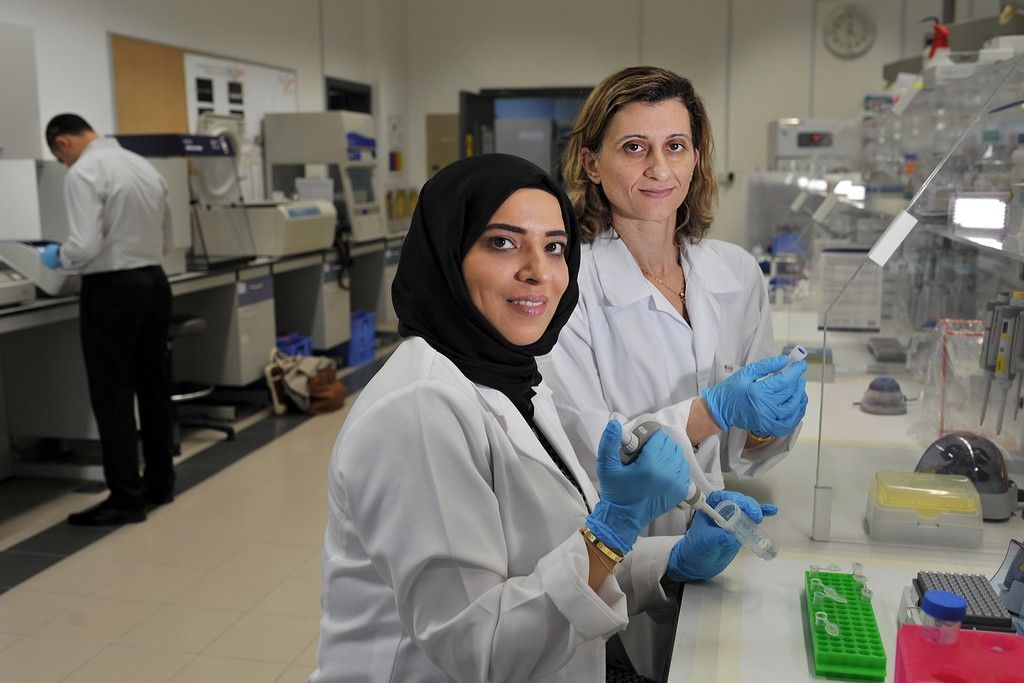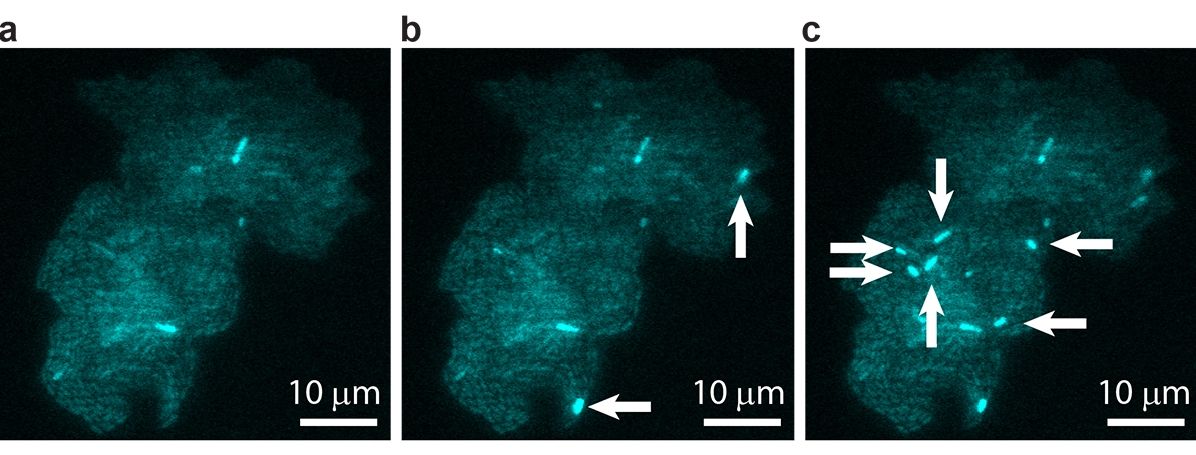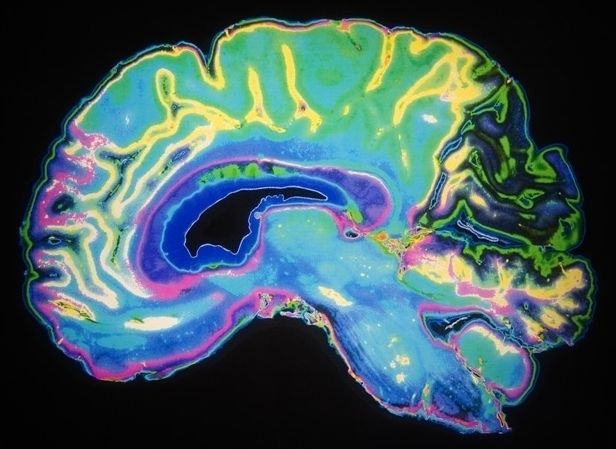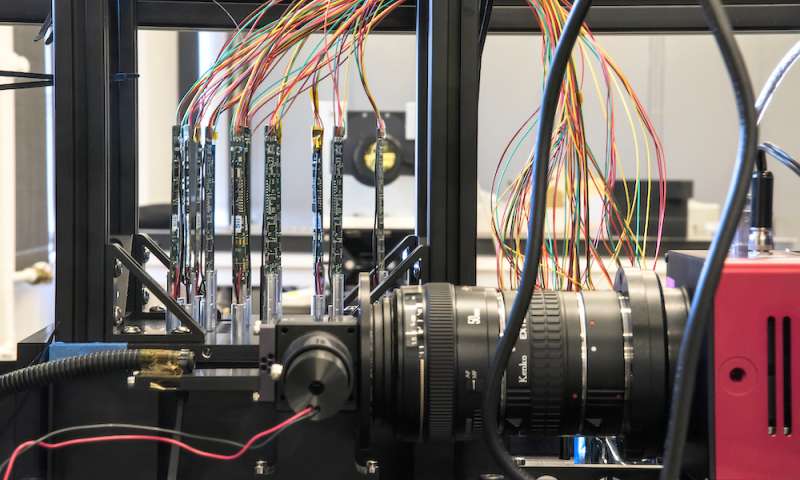Page 11116
Jun 13, 2016
Mom’s stress may put kids at risk for autism
Posted by Karen Hurst in category: neuroscience
Stress during pregnancy may raise the risk for having a child with autism for women who have an altered gene.
Jun 13, 2016
Genes, brain structure influence second language learning: study
Posted by Karen Hurst in categories: genetics, neuroscience
Very insightful for my deep mind/ neuro mapping friends.
If you have trouble learning a new language as an adult, maybe you can blame your genes and brain structure, a U.S. study suggested Monday.
The study by researchers at the University of Washington showed that genetic variations of the so-called COMT gene and a measure of the strength of the brain’s communications network — known as “white matter”— jointly accounted for 46 percent of the reason for why some college students performed better than others in the second language class.
Continue reading “Genes, brain structure influence second language learning: study” »
Jun 13, 2016
Emirati gene study shows diabetes and vitamin D deficiency risks
Posted by Karen Hurst in categories: biotech/medical, genetics
Diabetes 2 tie to Vitamin D issues.
First study of Emiratis’ genes highlights the links between type 2 diabetes and a deficiency in vitamin D. Soon doctors may be able to prioritise care for those who are most at risk.
ABU DHABI // The first study to examine Emirati genes and the links between type 2 diabetes and vitamin D deficiency uncovered a genetic code that identifies those susceptible to the deficiency.
Continue reading “Emirati gene study shows diabetes and vitamin D deficiency risks” »
Jun 13, 2016
Watching ‘jumping genes’ in action
Posted by Karen Hurst in categories: biotech/medical, food, genetics, physics
Jumping genes — not jumping beans.
“Jumping genes” are ubiquitous. Every domain of life hosts these sequences of DNA that can “jump” from one position to another along a chromosome; in fact, nearly half the human genome is made up of jumping genes. Depending on their specific excision and insertion points, jumping genes can interrupt or trigger gene expression, driving genetic mutation and contributing to cell diversification. Since their discovery in the 1940s, researchers have been able to study the behavior of these jumping genes, generally known as transposons or transposable elements (TE), primarily through indirect methods that infer individual activity from bulk results. However, such techniques are not sensitive enough to determine precisely how or why the transposons jump, and what factors trigger their activity.
Reporting in the Proceedings of the National Academy of Sciences, scientists at the University of Illinois at Urbana-Champaign have observed jumping gene activity in real time within living cells. The study is the collaborative effort of physics professors Thomas Kuhlman and Nigel Goldenfeld, at the Center for the Physics of Living Cells, a National Science Foundation Physics Frontiers Center.
Jun 13, 2016
Neuroscientists discover how the brain processes upper and lower visual stimuli differently
Posted by Karen Hurst in category: neuroscience
Visual information from near and far space are processed with differing degrees of acuity.
Neuroscientists from Tübingen have discovered how our brain processes visual stimuli above and below the horizon differently. The researchers led by Dr. Ziad Hafed of the Werner Reichardt Centre for Integrative Neuroscience (CIN) at the University of Tübingen investigated non-human primates, ascertaining that different parts of the visual field are represented asymmetrically in the superior colliculus, a brain structure central to visual perception and behavior. More neural tissue is assigned to the upper visual field than to the lower. As a result, visual stimuli above the horizon are processed sharper, stronger, and faster: our brain is wearing bifocals, so to speak.
Seeing — arguably our most important way of perceiving the world — mostly happens without conscious intent. We see much better in the center of our visual field (along the visual axis) than in the periphery. So when our brain detects an object of interest in the periphery of our visual field, it immediately initiates an eye movement so our visual axis intersects with those objects. Once an object is in our direct line of sight, we can perceive it in far more depth and detail.
Jun 13, 2016
US Presidential candidate Zoltan Istvan: ‘We must merge with machine to survive AI’
Posted by Zoltan Istvan in categories: geopolitics, robotics/AI
THE only way for humanity to survive the artificial intelligence (AI) revolution is for us to merge with the machines ourselves, according to US Presidential candidate Zoltan Istvan.
Jun 13, 2016
Microsoft’s LinkedIn buy escalates cloud wars
Posted by Karen Hurst in categories: business, computing, information science
“With the LinkedIn acquisition, Microsoft snares two prizes: the massive amounts of data contained in LinkedIn’s 433 million member profiles that are kept scrupulously up to date by business professionals and to which competitors have no access and the brainy computer algorithms that crunch that data.” the writeup.
Buying the Facebook of professional networks is perhaps the best illustration yet that the cloud wars are heating up.
Jun 13, 2016
Neutrons reveal unexpected magnetism in rare-earth alloy
Posted by Karen Hurst in categories: electronics, materials
More news on ORNL’s efforts around magnetic excitations in the metallic compound ytterbium-platinum-lead (Yb2Pt2Pb).
Researchers at the Department of Energy’s Oak Ridge National Laboratory and their collaborators used neutron scattering to uncover magnetic excitations in the metallic compound ytterbium-platinum-lead (Yb2Pt2Pb). Surprisingly, this three-dimensional material exhibits magnetic properties that one would conventionally expect if the connectivity between magnetic ions was only one-dimensional. Their research is discussed in a paper published in the journal Science.
An electron can theoretically be understood as a bound state of three quasiparticles, which collectively carry its identity: spin, charge and orbit. It has been known that the spinon, the entity that carries information about electron spin, can “separate” itself from the others under certain conditions in one-dimensional chains of magnetic ions such as copper (Cu2+) in an insulating host. Now, the new study reveals that spinons are also present in metallic Yb2Pt2Pb.
Continue reading “Neutrons reveal unexpected magnetism in rare-earth alloy” »
Jun 13, 2016
Researchers gear up galaxy-seeking robots for a test run — By Glenn Roberts Jr. | Phys.org
Posted by Odette Bohr Dienel in categories: cosmology, robotics/AI, science, space
“A prototype system, designed as a test for a planned array of 5,000 galaxy-seeking robots, is taking shape at the Department of Energy’s Lawrence Berkeley National Laboratory (Berkeley Lab).”


















